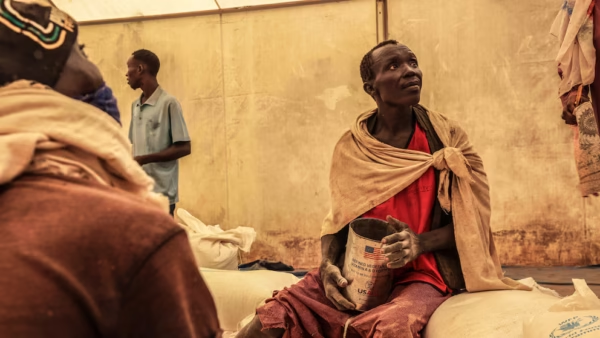Severe cuts in global aid are pushing millions into hunger. Discover which regions are hardest hit, why funding is shrinking.

Severe Hunger Looms for Millions Amid Global Aid Cuts
A Crisis We Can’t Ignore
Hunger is rising silently across the world.
Millions of families who once depended on regular food support now face an uncertain future.
The warning is clear—global aid is shrinking, and the most vulnerable are paying the price.
This is not just a distant story. It is a crisis that affects global stability, human dignity, and our shared humanity.
You can read a similar call for compassion in Voices for Peace, Love for Gaza. It reminds us how interconnected struggles truly are.
The Stark Reality
The World Food Programme has sounded the alarm.
Over 13.7 million people across six fragile countries are on the brink of severe hunger.
These include Afghanistan, Somalia, South Sudan, Sudan, Haiti, and the Democratic Republic of the Congo.
Funding for food aid has dropped by nearly 40% this year.
This means fewer deliveries, smaller rations, and millions left without support.
Behind these numbers are real lives—mothers skipping meals so their children can eat, farmers watching crops fail, and families forced to choose between food and safety.
Why Is Aid Being Cut?
The reasons behind this crisis are complex but painfully human.
1. Shifting Government Priorities
Many donor nations are redirecting funds toward domestic needs. Economic slowdowns, rising debts, and political shifts have made foreign aid less of a priority.
2. Global Economic Pressures
Inflation, conflicts, and financial instability are straining economies. As a result, international commitments are being scaled back.
3. Operational Challenges
Delivering aid to remote or conflict-affected regions is difficult. Rising costs and security risks reduce how far each dollar can go.
4. Geopolitical Changes
Policy shifts and competing international interests have reshaped how and where funds flow, often leaving the poorest behind.
The People Behind the Statistics
Numbers alone can’t capture the pain of hunger.
Women, children, and displaced communities are hit hardest.
In many regions, mothers are skipping meals so their children can eat.
Displaced families, already torn from their homes, now face empty plates too.
Farmers in rural areas, who once grew enough to survive, are battling drought and conflict.
Urban families, already spending most of their income on food, are slipping deeper into crisis.
Country-by-Country Impact
🌾 Afghanistan
In Afghanistan, over 10 million people rely on food aid. Funding cuts have made it harder to reach remote mountain communities. Families in rural provinces are particularly vulnerable, with harsh winters approaching.
🌍 Democratic Republic of the Congo
This country planned to feed millions this month. But aid cuts mean only a fraction will receive support. Families in conflict zones face severe shortages and rising malnutrition.
🇭🇹 Haiti
In Haiti, nearly 6 million people are at risk of hunger in the coming year. Economic collapse, violence, and political instability have made food both scarce and expensive. Many families are forced to rely on one small meal a day.
🌿 Somalia
Somalia plans to suspend aid for hundreds of thousands of people in the coming months. Drought has devastated farmlands. Without sustained funding, famine could return at a devastating scale.
🌅 Sudan & South Sudan
Both nations have long struggled with conflict and hunger. Aid cuts intensify these challenges. Communities displaced by fighting now face growing food insecurity and limited humanitarian support.
The Ripple Effect
Hunger is not just a humanitarian issue—it’s a global stability issue.
When millions go hungry, migration increases.
Conflicts deepen. Health systems break down.
Education suffers, and entire generations lose opportunities.
This crisis touches every corner of the world, whether we see it directly or not.
A Global Call to Action
It’s easy to feel powerless, but small actions matter.
- Governments should protect aid budgets, even in hard times.
- International organizations need stable funding to reach those in need.
- Communities and NGOs can build local resilience through food programs.
- Individuals can raise awareness, donate, and push leaders to act.
For further perspectives on how global communities unite during challenging times, explore A Global Love for Women’s Future.
For more global coverage, visit www.america112.com to see how this issue is being discussed internationally.
Standing Together Against Hunger
This hunger crisis is not inevitable.
It is a consequence of human choices—choices that can be changed.
Every dollar restored, every policy strengthened, and every voice raised can save lives.
When the world chooses compassion over neglect, hope begins to grow again.
Let’s make sure no one is left to face hunger alone.


One Reply to “A World Divided by Full and Empty Plates”